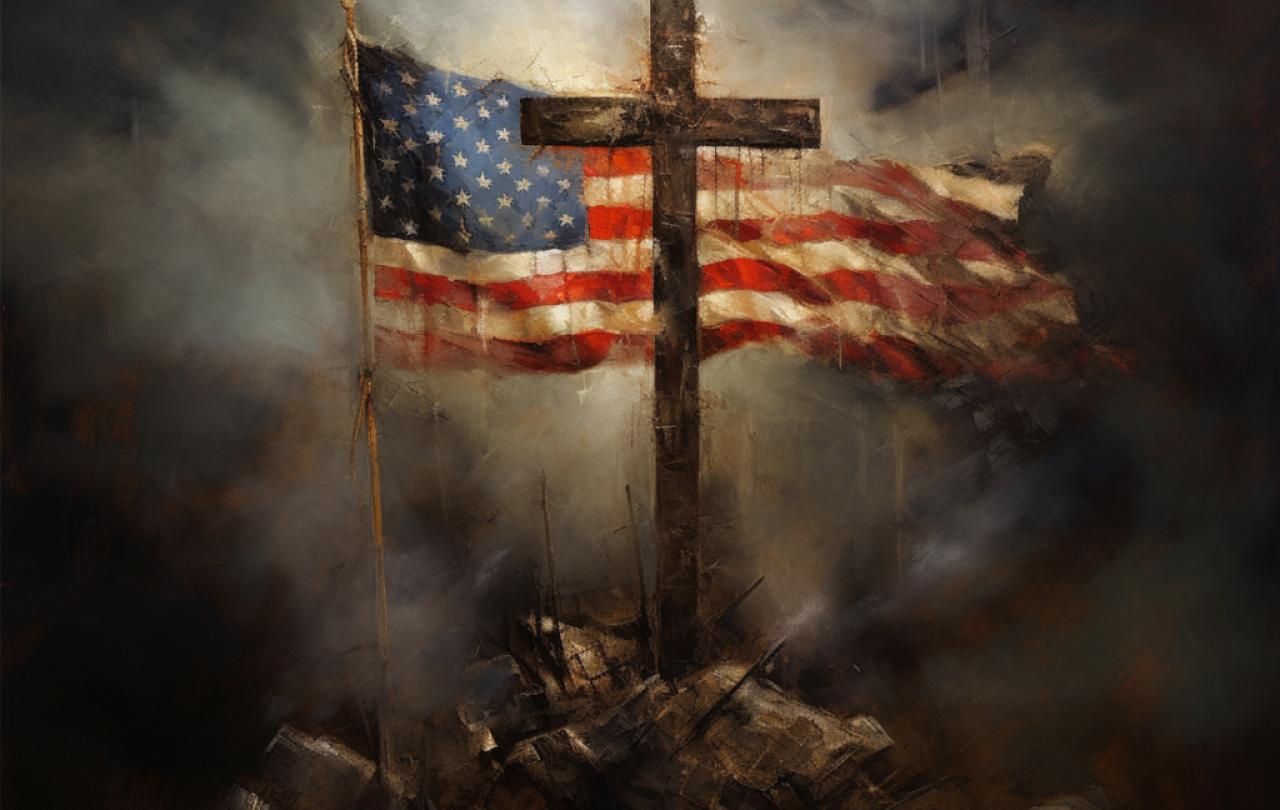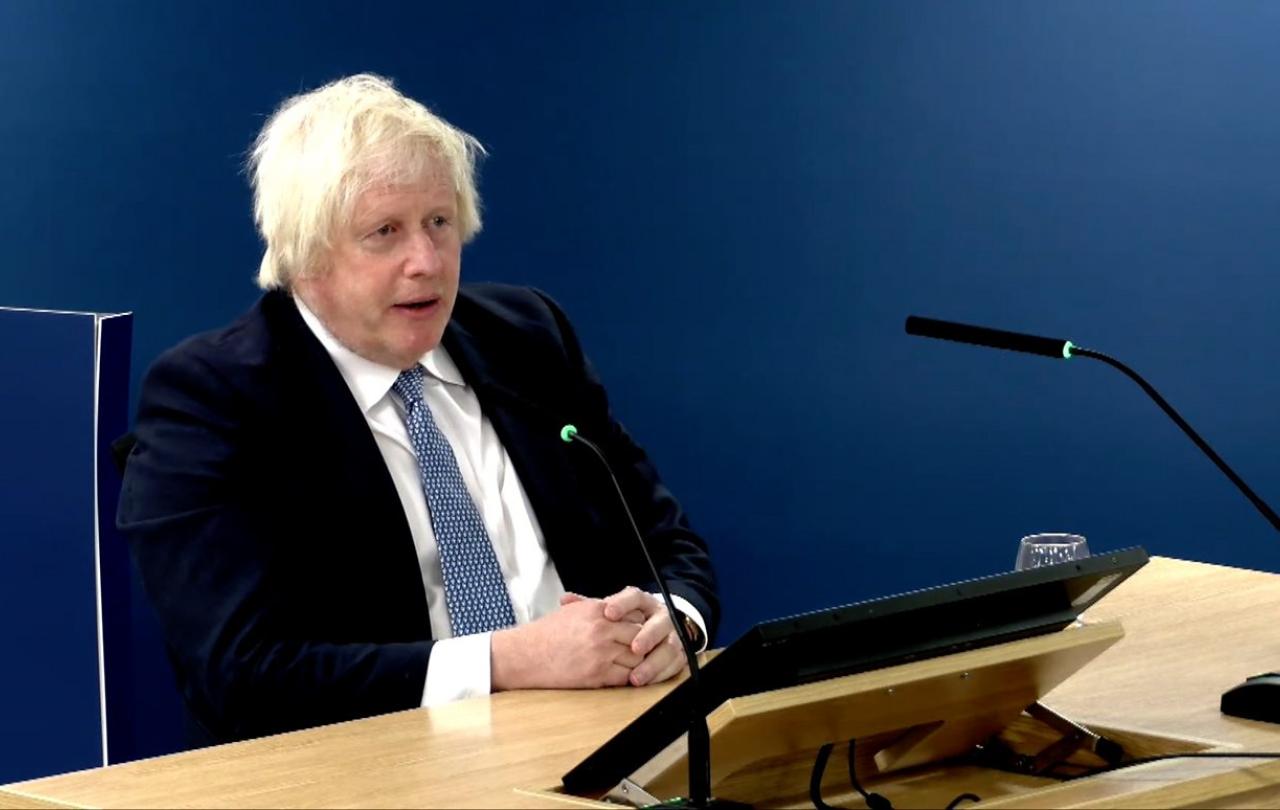
If you follow US politics, you’ve likely heard the term “Christian Nationalism.” According to Google Trends, the phrase peaked in popularity last summer, right around the public hearings of the January 6th Commission. But its popularity often obscures a near total lack of consensus on what it means.
Today, “Christian Nationalism” has political potency because it taps into primal identities, theologies, and moralities. You hear about it because commentators and academics need a way to narrate the social and political world. Tribes need it too. Yet, there are deniers. Evangelist Franklin Graham claimed that “Christian Nationalism” doesn’t exist. Many have come to understand it as a liberal dog whistle, either to discourage Christians from political activism or as a form of persecution itself. Still others, like Republican Representative Marjorie Tyler Greene, embrace it for themselves and campaign on it. For all its popularity, we need particularity.
Which Christian Nationalism?
When you say “Christian Nationalism” my response is “which one?” There are sociological, historical, political, ideological, and theological ways to define this term and their relation. The definition I prefer is the theological confusion of “white” with “Christian” and “Christian” with “American”. This confusion marks a transformation of theology into ideology, with social and political consequences. We won’t unpack that here. I’m using it as a starting point to show the variety of approaches to understanding the term.
Sociologists Andrew Whitehead and Samuel Perry describe “Christian Nationalism” as “a cultural framework—a collection of myths, traditions, symbols, narratives and value systems that idealizes and advocates a fusion of Christianity with American civic life.” Their study, published in Taking America Back For God, surveyed Americans on five questions. Questions included whether or not the government should declare the US a Christian nation, or whether it should allow prayer in schools. Based on the responses, they were able to categorize responders into types that reflected adherence to their definition. These types were Rejectors, Resisters, Accommodators, and Ambassadors.
What Whitehead and Perry describe as “Christian Nationalism” I would have called mere “Christianity” in my American upbringing in evangelical spaces. We can see here the germ of confusion over the term. What sociology names as “Christian Nationalism” can be understood as mere “faithful” Christianity within particular Christian communities.
It’s not that we ought to pick one over the other. It’s that we need to engage with multiple disciplines in sketching these borders, including theology. The problem that exists in the void of sociological or political accounts is how the idea of faithfulness to the church has been tied to and conditioned by socio-cultural norms and ideological commitments.
American Christians may need to distance themselves from the American Jesus
Christian Nationalism in history
Theologian Stanley Hauerwas puts his finger on this problem. He argues that, in the United States, white American identity and Christianity come together as “an identity without difference”. This fusion occurs when churches are determined by the story of America, a particular telling of its history. He writes,
When Christians in America take as their fundamental task to make America work, we lose our ability to survive as church. We do so because in the interest of serving America the church becomes unwittingly governed by the story of America… that story is meant to make our God at home in America.
Hauerwas helps us turn to the historical in understanding Christian Nationalism. Here, we are met with a persistent historical idea of a “Christian Nation” and its influence on the United States.
This idea preceded the United States and is as old as Christendom itself. Puritan minister John Winthrop called the Massachusetts Bay Colony as “City on a Hill” in 1630. Winthrop’s application to the Puritan colony has been stretched to its limits. Today, it still shows up in political rhetoric referencing the United States.
The historical idea of a “Christian Nation” has always been politically potent. But it has a distinct American flavour through the Constitutional disestablishment of religion in the Bill of Rights (the first 10 amendments after its adoption in 1787).
In his remarkable judicial history of religious freedom, David Sehat argues that while the Federal government rejected the idea of a State church, there was significant State level establishment of Christianity well into the 19th century. Beyond that, Sehat shows there was a significant socio-cultural movement of evangelicals which functioned as a de facto Christian establishment amidst de jure disestablishment.
In the Fifties, the Supreme Court under Chief Justice Earl Warren ruled to prohibit teacher-led prayer and enact integration in Jim Crow America. Sehat’s account interprets these rulings as a significant blow to the presumptive moral establishment. Today, you will hear constant appeals to a Judeo-Christian morality as the necessary proviso for a functioning democracy. These appeals often contain the claim that, at some point, the US has departed from this contract. My point is that this historical idea of a Christian nation is complex. But it is also a live question, actively shaping the political situation in every era.
300 years after Winthrop, Rev. Gerald L.K. Smith used the term “Christian Nationalism” in the 1930’s and 40’s as part of his “America First” and “Christian Nationalist Crusade” political movements. Smith was in many ways fascist-lite, especially in his anti-semitism and in his advocacy for a near theocratic Christian capture of the State. His preaching & activism featured a mix of blood & soil nationalism, conspiratorial narratives, and Christian moral teaching. In many ways, Smith stands as a historical harbinger of the political situation today.
Covert and overt Christian Nationalism
Today, you are more likely to hear US Christians sympathetic to the ideas associated with Christian Nationalism claiming the Founding Fathers were all practicing evangelical Christians, not Enlightened deists. You will hear nostalgia for an American past marked by Judeo-Christian values. You won’t hear nuanced historical narratives like Sehat.
Much of this is diffused through culture today through the widely discredited work of pseudo-historian David Barton. Barton has been associated with right wing figures and politicians like Ted Cruz and Glenn Beck. His New York Times bestselling book on Thomas Jefferson was retracted by a Christian publisher for historical claims “not adequately supported.”
The theo-political claim that America ought to be a Christian nation today is fueled by the historical claim that it was a Christian nation. This history is complex. As are the theologies and corresponding politics which emerge from them. Though various political orders exist, how the church relates to the State is never a settled question.
In the US today, there are two main streams, two understandings of “Christian Nationalism” which are converging with great political force. I call these the covert and overt forms of Christian Nationalism.
Overt Christian Nationalism is most concentrated in the ideas and practices of the New Apostolic Reformation. This movement, though lacking institutions or hierarchal organization, is called by some of its advocates as a “Fourth House of Christendom”. It emerged from the teaching of C. Peter Wagner, who was one of the founding advocates of Church Growth techniques at Fuller Theological Seminary.
In the last stages of his career, Wagner used spiritual warfare paradigms and Pentecostal theology to both narrate the success of his church growth techniques in the past, and envision their expansion into the social and political world. Wagner’s ideas coalesced into a new expression of Dominion Theology married with the prosperity gospel. This theology fuels the Christian capture and control of what Lance Wallnau calls the “Seven Mountains of Influence”. Media, entertainment, business—these are all mountains of influence for the church to rightfully claim as it combats darkness in the world.
Covert Christian Nationalism is most concentrated today with Reformed, magisterial Protestants like Douglas Wilson and Stephen Wolfe. Both have recently published books advocating for, among other things, the construction of a Christian political and social order.
Historically, much of these ideas emerged from Christian Reconstructionist thought. What makes these ideas covert is the strategies used to realize their Christendom. And what is significant is the way disestablishment (religious liberty) is central to this strategy. Gary North, a key figure in the Religious Right best summarized covert Christian Nationalism in 1982:
“we must use the doctrine of religious liberty to gain independence for Christian schools until we train up a generation of people who know that there is no religious neutrality, no neutral law, no neutral education, and no neutral civil government. Then they will get busy in constructing a Bible-based social, political, and religious order which finally denies the religious liberty of the enemies of God. Murder, abortion, and pornography will be illegal. God’s law will be enforced. It will take time.”
Wilson, in line with the covert strategy, has created something of a moral enclave in Moscow, Idaho. It is Christendom in a microcosm, and harkens back to the Magisterial Protestantism that prefigured the modern State. The New Apostolic Reformation, through prosperity preachers like Kenneth Copeland and prophecy figures like Lance Wallnau seek Christendom in macrocosm. If covert Christian Nationalism builds moral enclaves, overt Christian Nationalism rides the waves of new media, it seeks wealth and purchases the inside access to Trump’s evangelical court.
The political host
To understand the political potency of Christian Nationalism in the present, we have to recognize first that it is diverse. Both overt and covert forms of Christian Nationalism are theologically at odds in several ways. But theological diversity does not rule out political unity. This unity comes through utility, in the concentrated form of a willing political host.
Both overt and covert expressions of Christian Nationalism are often unified by and concentrated in willing political hosts. These variations of Christian Nationalism, reflected by Christian communities and increasingly by mere social groups with little or no religious affiliation, can always converge around and concentrate in a political host.
This is why foreign observers of the United States might just equate Christian Nationalism with the rise of Donald Trump. Trump, both his candidacy and his presidency, makes possible the paradoxical unity between overt and covert Christian Nationalism. Either expression can narrate his rise to power as accomplishing their goals, serving their purposes, in their way. There’s something to be said for treating this utility as a form of idolatry.
But the idea that Christian Nationalism will simply vanish if Donald Trump is incarcerated or fails to win the election ignores its historical persistence and its theological claims. Sociological attempts to name Christian Nationalism, and political or social attempts to contain it, like the January 6 commission, are helpful but are also provisional. This is because they are unable to disrupt the theological claims which fuel it.
A final word
Which brings me to the primary problem I believe Christian Nationalism poses. This article has tried to connect its social and historical reality to its current political potency. But its main error seems to me to be its move towards supremacy. Jesus’ rejection of political power in the wilderness and his resistance to political power through the Cross are lost in the rising tide of Christian Nationalism.
Catholic Church historian Fr. Hugo Rahner notes that the church has always given a “yes” and a “no” to the State. We need more thinking on what should properly be the church in America’s “yes” and “no”.
Christians have no natural or divine claim to authority over others on the basis of their confession. If the Church in the United States aims to address the political reality of Christian Nationalism, it must begin here again, as to what Jesus’ rejection of and resistance to political power actually means today. And in order to do this, American Christians may need to distance themselves from the American Jesus, only then to discern the things they have picked up and called “Biblical” which are merely ideological. Disillusionment proceeds divestment. Without this disillusionment and divestment, perhaps the political hosts of Christian Nationalism will continue to rise with the sanction of certain forms of Christianity in the United States, and around the world.





